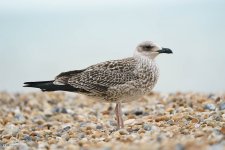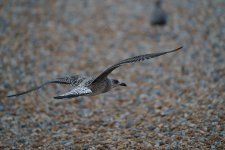Eimajm
Well-known member

Taken today 01/08/23. It's about time I properly got to grips with these gulls and I need your help. My thoughts are that contrasty head and clear mask and a pretty heavy bill whiteish belly and undertail point to YLG, but I'm really not confident enought yet to call it myself. If this is YLG any thoughts on what LBBG would show at this age that i haven't picked up on, or indeed if this is a LBBG what have I missed!





